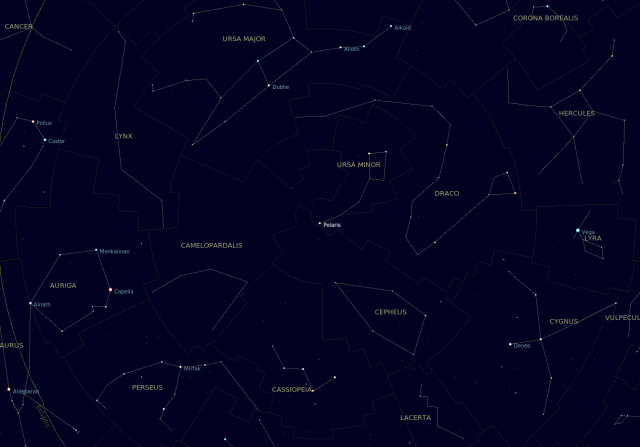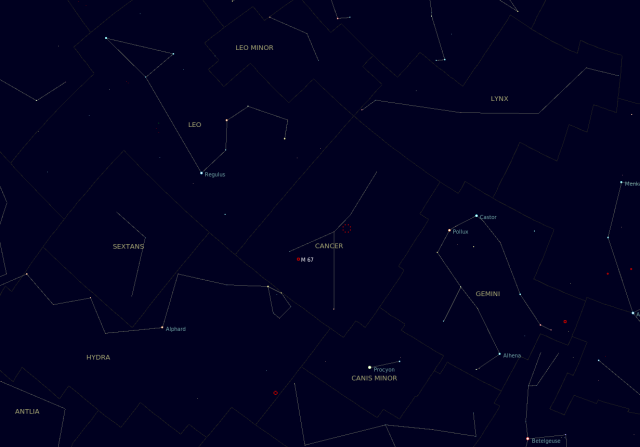Determining your limiting magnitude.
First determine if you're using your unaided eye, binoculars or telescope. You will then need to download the appropriate map from here. If you have a postscript printer, download the .ps postscript files as they will print cleaner than the .pdf files.
Once you have your file(s), on a dark moonless night go out into your back yard with a printout of the appropriate map and locate the appropriate object – Ursa Minor (Little Dipper) for the unaided eye, the "bowl" of Ursa minor for binoculars or M67 for a telescope.
Look at the object and circle the stars you see in the sky on the map. Use a red filtered flashlight if you need it to see the map. Once you've circled the stars you can see you can go indoors and work out your limiting magnitude.
Many of the stars on the map have numbers beside them. These numbers are the magnitudes of the stars they are beside, without decimal points. The decimal points have been omitted so they don't confuse you by looking like stars. This means that a star that is magnitude 5.3 is marked as 53, 10.2 as 102 and so on. Just assume there's a decimal point before the last digit.
Find the three stars you saw with the largest numbers. These will be the dimmest ones you saw. The average of these three stars will give you a good idea what your limiting magnitude will be.


